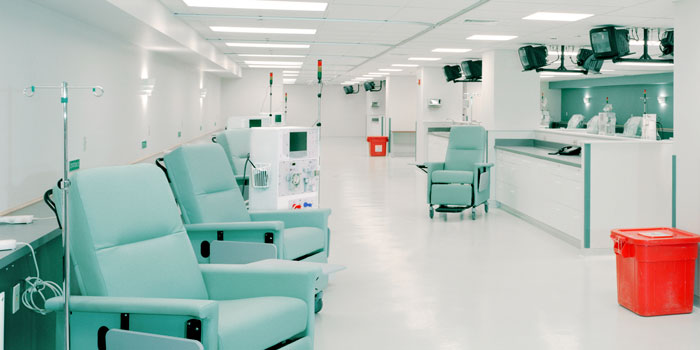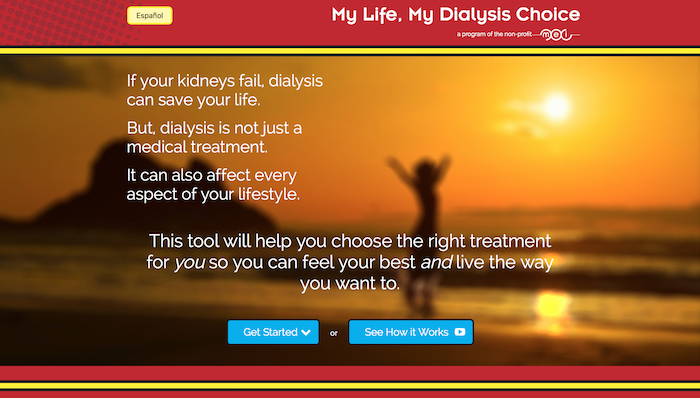A 30,000 Foot (Almost) 30-year View of US Dialysis

In 1989 when I first started in nephrology, the USRDS was embryonic, Kt/V in its toddlerhood, and there were no clinical practice guidelines or QIPs. The Centers for Medicare and Medicaid Services (CMS, which should be CMMS) was the Healthcare Financing Administration (HCFA). The ESRD Networks were just 11 years old—and it took me about 10 more years to figure out what on earth they DID. There were about 2,500 dialysis clinics, with at least a dozen companies participating as for-profit entities. Amgen had just patented EPOGEN® and was about to change the kidney world by investing millions of dollars in patient and professional education over the next 15 years or so.
As someone who has worked in the field—but never in a clinic—with patients to care about, but not for, it’s been possible to rise above the daily dash to deliver dialysis and examine the big picture. Basically, I’ve had the luxury of a 30,000 foot view of our industry for nearly three decades, and, thanks to my mentors from around the world, like Dr. John Agar, a global one. While some of what I’ve seen has been frustrating, there are also some great signs of progress in focusing on and improving patient care—and some glimmers of hope.
Let’s start with the biggest frustrations:
- The very notion of “adequate” dialysis has lowered the bar for patient outcomes. Would any of us accept “adequate” treatment that leaves us feeling washed out, exhausted, and at a high risk of life-disruptive and costly hospitalizations? Of course not!
- We still routinely offer only three hemodialysis treatments per week. We’ve known since 1999 that doing hemodialysis just thrice weekly—at least in the U.S. “bazooka” fashion—creates an abnormal pattern of deaths, with 50% more sudden cardiac death on the Mondays or Tuesdays after the 2-day no-treatment gap. In fact, I blogged about this 4 years ago.
 But, we persist in this NON-evidence-based approach, have exported it all over the world, and still have no resolution about the MACs attempt to write national policy and further institute this lethal practice. If you missed Dr. Al Collins’ blog post about this, read it here.
But, we persist in this NON-evidence-based approach, have exported it all over the world, and still have no resolution about the MACs attempt to write national policy and further institute this lethal practice. If you missed Dr. Al Collins’ blog post about this, read it here.

- Measuring the “dose” of dialysis with Kt/Vurea is still happening, though somewhat deemphasized, since nearly every clinic can hit this low bar, creating floor effects in the measure. But, problems with Kt/Vurea are legion (and explain why other countries don’t use it):
- Dialyzer clearance (K) is measured in non-blood fluids, and is inaccurate.
- Time (t) was mistakenly tossed out as unimportant when it did not quite reach statistical significance in the flawed National Cooperative Dialysis Study. Since then, time has repeatedly been shown as an essential factor in hemodialysis, yet U.S. treatments still average less than 4 hours thrice weekly.
- Volume of body water (V) is never measured. It’s just based on a model—which underestimates it compared to anthropometric estimates.1
- Urea is not a representative solute, as it freely moves between fluid compartments—it’s just cheap and easy to measure. Even Dr. Gotch admitted in a publication that the dialysis prescription should also include “consideration of” other solutes, including phosphorus and beta-2 microglobulin.2
- The Kt/V formula includes nothing about water removal—which Dr. Agar has pointed out is at least equally if not more important than solute removal in dialysis.

- No part of Kt/V takes into consideration how active and functional patients want to be. An 85 year old sedentary patient of the same body size receives essentially the same prescription as a 32 year old who wants to keep a job. (Similarly, we now seem to be committed to undertreating anemia—even though the link between inflammation and death associated with higher doses of ESA drugs has not been investigated in the US and is, IMHO, a likely mediator. I’m not a clinician. But, I was right about anemia influencing hemoglobin A1c levels about a decade before it was published, and I think I’m right about this, too. Time will tell. So will studies from Japan…)
- PD and home HD are dramatically underutilized in the U.S., even though 94% of nephrologists would choose these for themselves3. Why is this? There are lots of reasons, and we really don’t know which ones are primary. My suspicion?
- Nephrologists wrongly believe they will make less money if patients dialyze at home. Beth Witten wrote a terrific blog post demonstrating that this is not true.

- U.S. Nephrologists often do not learn chronic dialysis in detail in their training—so they are not comfortable answering patients’ questions. (Merighi ibid)
- When patients are educated at all, they are asked with a “modality-first” approach that doesn’t assuage their fears. Instead, asking people “What matters to you?” using our My Life, My Dialysis Choice tool which helps them match their values to a dialysis option seems to be far more effective in our preliminary research (draft in progress).

On the plus side…
- We are finally starting to focus on ultrafiltration rate and amount.
 The USRDS—all these years—never reported either one. But, after the fabulous work of Dr. Chris Mcintyre’s group on organ stunning
The USRDS—all these years—never reported either one. But, after the fabulous work of Dr. Chris Mcintyre’s group on organ stunning
 and Dr. Jenny Flythe’s terrific analyses of UFR and mortality, CMS has moved relatively quickly to focus on water and not just urea. This is HUGE in my opinion: probably one of the best moves in U.S. dialysis in my career.
and Dr. Jenny Flythe’s terrific analyses of UFR and mortality, CMS has moved relatively quickly to focus on water and not just urea. This is HUGE in my opinion: probably one of the best moves in U.S. dialysis in my career. - We are focusing on patient-reported outcomes, not just clinical ones. Listening to the PEOPLE who are affected by kidney disease and not just their lab test values is a tremendous move forward.
- Patients have the right to be told about all of their treatment options—and where to get them. MEI is proud of our advocacy to obtain this right when the CMS Conditions for Coverage for Dialysis Facilities were (finally) updated in 2008. Ten years later, some patients are still not being told effectively, but things are better than they were.
- Daily and nocturnal hemodialysis are options for patients. The first U.S. chronic hemodialysis treatments lasted 8-12 hours.4 But, after Medicare began to pay, US treatment times got shorter for both in-center and home treatments. Daily and nocturnal HD offer autonomy, schedule flexibility, more hours of membrane contact time, and much more.
- “Transitional Care” units are back! Initiating dialysis is a point of maximum fear for many patients, so it’s great news that Dr. Bob Lockridge has resurrected the Northwest Kidney Centers’ approach to dialysis onboarding,5 with a 4-week planned program of education and 4x a week dialysis treatments.
I am sure that I missed some things, so please feel free to add your suggestions in the comments!
- Daugirdas JT, Greene T, Depner TA, Chumlea C, Rocco MJ, Chertow GM, for the Hemodialysis (HEMO) Study Group. Anthropometrically estimated total body water volumes are larger than modeled urea volume in chronic hemodialysis patients: Effects of age, race, and gender. Kidney Int. 2003. 64:1108-19 ↩︎
- Gotch FA, Levin NW, Daily dialysis: the long and the short of it. Blood Purif. 2003;21(4-5):271-81 ↩︎
- Merighi JR, Schatell DR, Bragg-Gresham JL, Witten B, Mehrotra R. Insights into nephrologist training, clinical practice, and dialysis choice. Hemodial Int. 2012 Apr;16(2):242-51 ↩︎
- Blagg CR. The early history of dialysis for chronic renal failure in the United States: A view from Seattle. Am J Kidney Dis. 2007 March;49(3):282-96 ↩︎
- Eschbach JW, Seymour M, Potts A, Clark M, Blagg CR. A hemodialysis orientation unit. Nephron, 1983;33: 106-10 ↩︎


Comments
David Rosenbloom
Aug 12, 2018 11:12 PM
It was the beginning of an amazing journey for me and a friendship I will treasure as long as I live. More than anyone in the CKD field, Dori has been my prime mentor and confidant. I've learned more about kidney disease and dialysis from her and her organization, MEI, in those years than from any another person. She is smart, selfless and indefatigable. And few folks in our industry, and it is an industry, know as much or are as honest as Dori. Her dedication to the improvement of the lives and health of all CKD/ESRD patients is legendary.
This blog with her almost 30 year perspective is so instructive. Hopefully it is eye-opening to many medical professionals who do not want to be reminded that the status quo is not the end point... that business as usual will not save lives nor rehabilitate the ever-growing number of people who develop ESRD. We have a long way to go, and Dori has been leading the way, pointing out our errors and successes, and never flagging in her challenge to improve the quality of life of those on dialysis. Bravo, Dori!!
Gary Peterson
Aug 14, 2018 8:01 PM
Junk-bond financing made hundreds of U.S. nephrologists multi-millionaires. Unfortunately, in doing so, they committed their patients to minimal, non-rehabilitative dialysis treatment regimens. The operational efficiencies developed by the largest, junk-bond financed dialysis providers drove Medicare reimbursements lower for all, defeating the efforts of other U.S. nephrologists trying to provide more holistic care. As a result, patients have had virtually no voice in their systems of care and have seen little change in technology for decades.
If you want to transform U.S. dialysis care and technology, you will have to pay junk-bond dialysis companies to embrace and develop renal rehabilitation programs.
Dori
Aug 13, 2018 1:09 PM
Gale Schulke
Aug 10, 2018 10:58 PM
Humanizing dialysis has become the "Mantra" of Satellite Healthcare. We design dialysis, not assign dialysis, particularly in the Home programs.
Too many of the LDL's do not take the time to understand the affect dialysis has on the patient. It is all about the numbers. Kidney disease is probably one of the hardest diseases to deal with because people do not understand that dialysis is just a part of the treatment. I have seen so many families broken apart because family and friends do not understand the full scope of how it affects people.
I see Intermittent peritoneal dialysis being used more and more as a way to preserve what is left of their kidney function to get them to transplant without all the rest of the complications.
Dori
Aug 13, 2018 1:11 PM
Laurie Hines
Aug 10, 2018 1:33 PM
I know Missouri is grateful, and we hope to leverage everything we learn here to improve the lives of Missourians with kidney disease.
Dori
Aug 10, 2018 1:53 PM
Vernon J. Scharp
Aug 09, 2018 10:07 PM
I have been on home-hemo for 10 months, with in-center dialysis while on a short vacation or when my wife and partner needs a break. Center dialysis wreaks havoc on me! I also question in my mind many of the points you bring up in your post. Thank you.
Vernon Scharp
Dori
Aug 09, 2018 10:15 PM